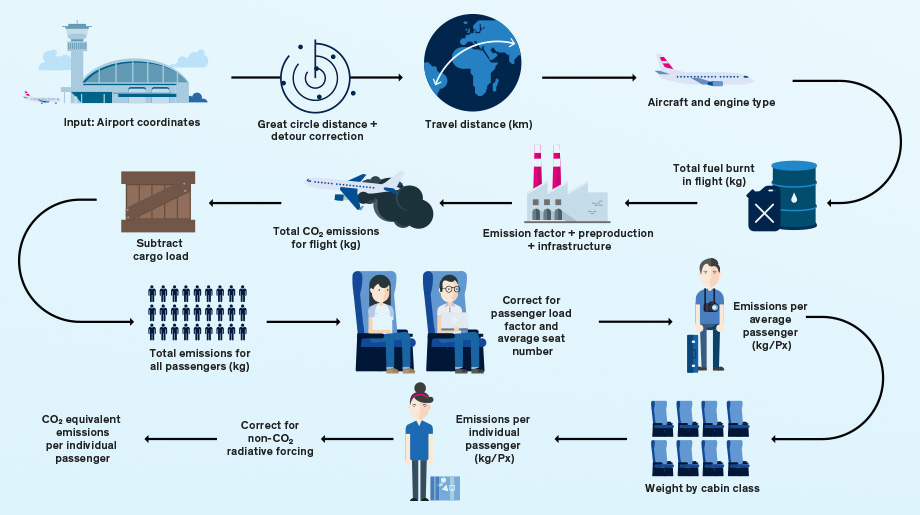The environmental team from myclimate adapted the flight emissions calculator in a large-scale project with the help of current studies and data from the aviation industry. Since 2005, myclimate has offered to calculate the emissions produced by business or private flights, free of charge. The myclimate offer is being used by more and more customers. In 2019, the growth in the use of the myclimate calculator was around 400%.
This has changed
The myclimate flight calculator is now based on the European Standard in Transport (DIN) EN16258 and corresponds to the currently applicable norm. The calculation is based on updated data regarding aeroplane types and their specific fuel consumption and number of seats, as well as the average occupancy of the flights. The data cover all major international airlines. The data basis for this calculation is provided by the International Civil Aviation Organization, ICAO, an agency of the UN. The new myclimate flight calculator also records the emissions linked to the infrastructure at airports, as well that related to the aeroplanes themselves (production, maintenance, disposal).
Further adjustments concern “extra mileage”, that is the additional kilometres flown per flight due to air traffic control or general queues for take off and landing. The freight too is now allocated using a new method according to its mass. Likewise the kerosene production in the upstream chain has been more precisely calculated using new data.
The evaluation of additional non-CO₂-producing emissions, undertaken using the RFI factor (Radiative Forcing Index), remains unchanged. The myclimate approach has recently been corroborated by a study by Jungbluth et al. on the calculation of flight emissions.
Effects
In comparison to the previous version of the myclimate calculator, the results for each flight show slight differences, for long haul flights in particular. These are somewhat lower thanks to new and more efficient planes and the new evaluation of the freight factor. As such, a round trip from Zurich to New York in economy class corresponds to a personal CO₂ emission of exactly 2.0 tonnes (previously, 2.3 tonnes).
“We have worked on updating our online calculator for a long time. To this end we have carried out extensive research and taken the most up-to-date information from the industry into consideration. We are convinced that with the results of our efforts, we can offer interested private individuals and business customers the most accurate calculation of CO₂ emissions for flights,” said Daniel Kammerer, Head of the Consultancy and Solutions division at myclimate.
At myclimate Daniel Berking, Master in Engineering for Technical Environmental Protection (Diplom-Ingenieur für Technischen Umweltschutz), was responsible for planning and implementing the project.
Link to the myclimate flight calculator
Detailed link to the calculation bases
*Study on the calculation of CO₂ emissions
Jungbluth N., Meili C. (2018) Aviation and Climate Change: Best practice for calculation of the global warming potential. Working paper. ESU-services Schaffhausen
